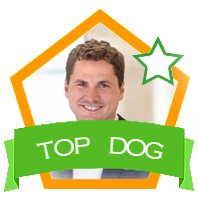A little preamble.
We’ve been looking at bringing on a second ePortfolio platform since January. We’ve used the D2L ePortfolio platform for two years, with some significant gains, but with quite a few growing pains. The tool doesn’t seem to be getting much focus from D2L – instead they seem to be looking at mobile ePortfolios the last few years. While that’s great, and the app is very, very slick, the way we authenticate to our LMS prevents us from using any of the D2L developed apps; Assignment Grader, ePortfolio, Binder, Pulse, none of them will work for us because of the way we authenticate. Changing our authentication process is on our list of things to do, but isn’t going to happen soon (think: one to two years).
While ePortfolio is a good tool for individual use in context of classroom activity, it doesn’t really do co-curricular stuff well without a bunch of workarounds, like creating a course to house the co-curricular activity. It works well in a mentorship situation (where the mentor is an instructor in a class). It also doesn’t allow people to collaborate effectively. You can share a presentation, giving the other person full rights to edit, but for some weird design reason, you cannot edit anything that exists in the presentation. Even with permission to edit the underlying artifact. This was a deal breaker for a few faculty in large classes. Critical reflection in a social space is something our faculty want, our students want and the literature suggests might be more effective at challenging underlying fundamental thinking.
So we started looking at options.
I tried to advocate for a Domain of One’s Own style project using WordPress as a base for how students could construct a “portfolio” – but too many people felt that it couldn’t adapt to a curriculum based approach where an instructor type person could securely grade and provide individual feedback. People that have used WordPress understand that you can in fact, do just that, but it take a little more work. All else fails there’s e-mail right? Honestly, I didn’t think this option would gain much ground, it’s too radical for our campus, and not necessarily a perfect, easy fit for our needs.
We looked at other providers, Known, Digication, Mahara (and holy crap if you think D2L ePortfolio produces elderly looking portfolios, Mahara looks like warm garbage strewn across an empty strip mall from the 80’s) and a number of free solutions (including Pathbrite). Nothing really did all of the things that we wanted – we needed a pretty broad tool that could do many different things (including co-curriculum uses, personal uses, group/shared uses, curricular uses and finally, a mentor/mentee communication tool).
After putting the others through the review process, we ended up selecting PebblePad and began planning. Negotiation took a bit longer than we liked, but all in all, we turned on the system on September 2nd. We didn’t have time to do single sign-on, or connect the Student Information System to it, or our authentication system. Basically we have a link in the LMS that takes the student/user to the login page and they authenticate to an account I’ve created (to date, 7260 accounts). It also means that the assessment areas in PebblePad – called ATLAS – (which are distinct from assessment in the LMS) were created manually by me (about 40 so far).
The fact that we turned on the system and did some minor configuration and started running within hours (albeit in a hosted environment) was pretty pleasant. There’s been no major issues (so far). There’s been no real questions come in to ask about “how do I?” – mostly about “can I get an account?” I’ll update in a month or so how things have gone to that date in the future.



